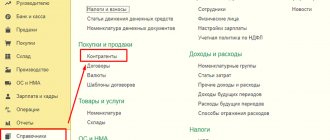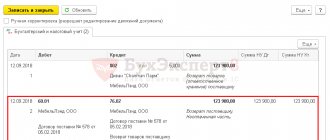Definition
It follows from this that shipment of goods is the process of transferring manufactured products either directly to the buyer or to the carrier. It is this moment that is the cutoff after which the ownership right passes from the manufacturer (seller) to the purchaser.
This rule follows from Art. 223 of the Civil Code of the Russian Federation, however, there is a clause stating that the parties are free to agree when exactly this transition will take place. For example, at the time of transfer of goods from the carrier to the buyer in some locality, from where the buyer will deliver the goods to his warehouse using his own transport. Or the carrier will deliver it to the buyer’s warehouse, and only there the latter will become its owner.
Transport documents
You request these documents from the logistics company if you are delivering the cargo yourself, or from the supplier if he is handling the transportation. If you entrusted logistics issues to a customs broker, then the broker collects this package of documents independently. The type of document depends on the transport chosen for transportation.
CMR
This is an international consignment note, which is used for transportation by car. It is filled out and signed by the shipper (that is, the supplier) and the carrier. The CMR is made in at least three copies: for the sender, for the carrier and for accompanying the cargo. If this is a transit shipment, then there may be more copies: it all depends on the number of transit countries.
CRM example
Waybill
The consignment note is used for transportation by any transport except road transport, and confirms the conclusion of an agreement between the customer of the cargo transportation (this can be the supplier, customs broker or you, the importer) and the carrier. It is drawn up in three copies - for the supplier (shipper), for you (consignee) and for the carrier. It is he who prepares this document.
Example of a waybill
Bill of lading
When transporting by sea or multimodal transport, a bill of lading is drawn up (from the English consignment - cargo, consignment of goods). This is the carrier's official receipt of the goods and his obligation to deliver the goods to their destination. This document is provided by the shipping line.
This is what a Maersk sea carrier bill of lading looks like
TIR Carnet (TIR)
It is needed if the cargo is traveling in transit, that is, from one country to a second across the borders of other countries. Lately, carriers have not often used this document. It is used in road transport to facilitate transit customs procedures. The purpose of the TIR is to guarantee the safety of the cargo and payment of payments in the event that something happens along the way and the cargo does not reach its final destination.
Tir Carnet 4 sheets. The document is issued to transport companies by ASMAP - Association of International Road Carriers
Transit declaration
This document is also required only in case of transit. This is an analogue of the TIR Carnet, that is, your package of documents must contain either a TIR or a transit declaration as a guarantee of the carrier’s responsibility for delivering the goods.
The transit declaration is prepared by the carrier through the insurance company, where he contributes the guarantee.
Analogue of Tir Carnet - transit declaration
Packing list
It is compiled by the supplier when preparing the cargo for shipment. The information in the packing list largely duplicates the invoice, but must necessarily contain the weight characteristics of the cargo and packaging, their volumes and information about what and how the cargo is packed.
There is no single approved form, so each supplier prepares the packing list differently. The main thing is to ensure that the information is complete and consistent with other documents.
This document describes all the details of the packaging of the goods, which is especially important, for example, when transporting fragile items - in such cases, the weight of the packaging may exceed the weight of the product itself.
Since the duty is calculated based on the weight of the cargo without packaging (net), customs may have doubts about whether you are trying to underestimate payments. In this case, the packing list comprehensively explains the reason for the difference in net and gross weight.
Why is it important?
Fixing the moment of transfer of ownership is a very important point in the contract for the sale of goods. Indeed, during transportation, cargo is exposed to many different risks, such as its loss or damage, failure of individual parts, damage that negatively affects the appearance of the product.
Therefore, it is necessary to find out in advance who bears these risks, in other words, who will pay for all this. For the same reason, it is necessary to correctly prepare shipping documents. After all, only having them in hand can you count on the opportunity to prove your case in arbitration court. And, therefore, to compensate for losses that may be caused when these negative circumstances arise.
The agreement and its subject
The first document from which relations with a counterparty begin is a supply agreement or a goods sales agreement. What is their difference? The first of them is issued when the seller himself manufactures the product, and the second when he resells it. At its core, supply is a type of purchase and sale. The differences in the preparation of documents for shipment in the first and second cases will be discussed below.
What needs to be included in the agreement in order to successfully complete and process the shipment? The first necessary condition without which in the case under consideration the contract is considered not concluded is the condition about its subject - the goods. It needs to be described in sufficient detail, since this data will definitely be needed when filling out shipping documentation, in particular for the invoice for the shipment of goods.
Documents confirming the quality of the goods according to 44-FZ, 223-FZ
According to current legislation, the supplier is obliged to transfer goods of proper quality to the customer. This requirement is usually specified in the concluded agreement. For certain types of products, it is also mandatory to provide a document confirming its quality. The list of such goods is approved by the Russian government. In this material we will look at what documents can be used to confirm the quality of your products and the specifics of obtaining them.
What documents confirm quality
A product that fully complies with current standards and the needs of the buyer is considered to be of high quality. Products are safe if they cannot cause harm to human life and health, flora, or the environment. According to Article 20 184-FZ, there are two types of documents confirming the quality and safety of goods:
- Certificate of conformity;
- Declaration of Conformity.
For some products, obtaining such documents is mandatory. Their list was approved by Decree of the Government of Russia No. 982 dated December 1, 2009. When selling such products, the seller is obliged to transfer to the buyer copies of certificates or declarations, certified by a seal. If the contract is concluded for the supply of medicines or medical devices, then in addition to documents confirming the quality of the products, the supplier provides the buyer with information about state registration.
Certificate of conformity
A certificate of conformity is a document confirming the quality of products, which is issued by a specialized accredited center. Specialists check the sample of goods handed over to them for compliance with the requirements established by law and issue an appropriate conclusion, drawn up on a standardized form.
There are two types of product certification:
- Mandatory. Applies to goods included in the list approved by the Russian Government. It mainly includes products that may affect the safety of people. Certification center specialists conduct a number of tests and laboratory studies. In the absence of a certificate for a product subject to mandatory inspection, the supplier does not have the right to sell it.
- Voluntary. The manufacturer has the opportunity to check the compliance of its product with quality and safety requirements. This will help him strengthen his business reputation and expand his sales market. With certified products, he can participate in government procurement without any problems.
Product certification is paid. The cost will depend on the type of certificate, the complexity of the tests performed, the need for a specialist to visit the production site and other factors.
Receipt procedure
It is necessary to obtain a certificate of conformity for imported goods before importing them into Russia. For domestic products, this should be done before putting them on the market. Voluntary certification can be carried out at any time.
The document can be obtained by the manufacturer, official distributor or seller. It is beneficial for the manufacturer to order a document for a series of goods. It allows shipment of an unlimited number of products within a certain period of time. Importers often receive a certificate for a batch of purchased goods. The seller can also order the document if the manufacturer has not done so.
The process of obtaining a certificate is divided into several stages:
- The applicant collects the required package of documents. It includes copies of the company’s INN and OGRN certificates, the charter, technical conditions or GOST according to which the products were manufactured, and a description of the goods presented. An application for obtaining a certificate is attached.
- The applicant submits the collected documentation and product samples to the accredited center.
- Specialists conduct the necessary research and issue a certificate.
- The completed document is handed over to the applicant.
If during testing of a product it is revealed that it does not comply with at least one quality or safety requirement, the applicant is denied a certificate. Once the identified deviations have been corrected, you can resubmit your application.
Providing to the buyer
The customer can only make a request for certificates when purchasing goods that are subject to mandatory certification. According to Article 456 of the Civil Code of Russia, the supplier transfers copies of documents along with the goods. In some cases, the customer may require that they be included as part of the second part of applications for participation in the electronic auction.
There is no need to give the original certificate to the customer. A properly certified copy will be sufficient. It is printed on an A4 sheet. It must contain the inscription “Copy is correct”, a handwritten signature of the head of the supplier’s company, as well as a seal. It is also allowed to indicate the full name of the manager and the date of certification. Providing electronic copies of certificates is not permitted.
Declaration of Conformity
The declaration of conformity of goods with quality and safety requirements is a document issued according to simplified rules. Its purpose and rules of use are exactly the same as those of the certificate. There are several distinctive features of such a document:
- The declaration is printed on a regular A4 sheet that does not have any security elements. Certificates are always issued on specialized forms.
- To obtain a declaration, the applicant can submit to the accredited certification center, along with a package of necessary documents, test reports conducted in its own laboratories. This significantly speeds up and reduces the cost of obtaining a document.
- During certification, a check is carried out to ensure that the product meets all established standards. During the declaration, the applicant can independently determine the list of documents that the products must comply with.
A correctly completed declaration of conformity has the same legal force as a certificate of conformity. The validity period of the document is set by the seller in accordance with the expected sales period.
The requirements for providing declarations of conformity during public procurement are similar to the rules established for certificates. It is allowed to transfer copies certified by the supplier with the goods.
Authentication of certificates and declarations
Information about all issued certificates and declarations is entered into the relevant registers. They are posted on the website of the Russian Accreditation Agency. They contain the details of the document, its validity period, information about the product itself and the tests being carried out. Any user can verify authenticity by entering the certificate or declaration number in the appropriate form. Registers are maintained according to the rules established by Government Decree No. 201 of April 10, 2006.
If a document was issued less than a week ago, then information about it may not be reflected in the register. This is due to the technical features of maintaining the list. Therefore, ask the certification center when the data will be reflected in the register.
The choice of document confirming the quality and safety of the product will depend on the type of product. If the obligation to obtain a certificate or declaration is prescribed by law, then it will be impossible to fulfill a government contract without it.
4.0769230769231 Rating 4.08 (13 Votes)
Product description
Its name can be indicated according to:
- All-Russian Product Classifier;
- GOST;
- technical conditions, other regulations;
- technical passport;
- certificate of conformity;
- supplier catalogs.
Another essential condition, without which it cannot be said that the contract has been concluded, is an indication of the quantity of goods. It is determined either in units of measurement or in monetary terms. In this case, the quantity of goods must be agreed upon for each item.
Other important parameters
Although their absence in the contract does not initially indicate its invalidity as not concluded, it may subsequently, if disputes arise, become an obstacle to the presentation of evidence in the arbitration court. In some cases, the court may recognize such an agreement as not concluded.
These include instructions on:
- assortment and completeness;
- delivery time;
- price of the goods.
If this is a supply contract, then, as a rule, a specification is attached to it. This is a document that indicates the name of each product item, quantity and other characteristics.
Basic rules of shipment
To ensure the safety and quality of the supplied goods and create conditions for its timely acceptance, it is necessary:
- Strictly comply with the rules for packaging goods, its labeling and sealing of individual places.
- Accurately determine the quantity of goods (its weight, bags, bundles, boxes, packs, bales).
- Deliver products that meet the established requirements in terms of quality and completeness.
- Clearly and correctly draw up documents certifying quality and completeness, shipping and settlement documents and check the compliance of the data specified in the documents with the actual ones.
- Transfer documents to the receiving party or send them, depending on the terms of the agreement.
- Comply with the loading and securing rules in force for transport.
Documents issued in the country of departure
Some of the documents in this section are not required to be presented, but may serve as the basis for preferences in relation to import duties. Therefore, if the purchased product belongs to a preferential category, do not forget to request the relevant papers from the seller.
Export declaration
This document confirms the legal sale of the goods in the supplier's country and, along with the invoice, is proof of the value of the imported goods. Depending on the exporting country, ED registration standards vary: for EU countries the EX-1 form is adopted, and for China or the USA other forms are approved.
Keep in mind that both the seller and the buyer may be responsible for completing this document. We recommend that the supplier's obligation to prepare an export declaration be included in the contract. It is advisable to translate it into Russian. You can do this yourself without contacting a translation agency.
Export declaration provided by the Greek supplier
Certificate of origin
This paper clearly confirms that the imported goods were produced in a specific country. The country of origin of goods influences the calculation of customs duty rates, since within the framework of the Eurasian Economic Union, a favored economic regime .
If the product is produced in a developing country (for example, Brazil), you can reduce the import duty by a quarter. If the product is made in one of the least developed countries (for example, Cambodia), then the import duty is reduced to zero. A complete list of countries to which tariff preferences apply can be found here. It was approved by decision of the Customs Union Commission No. 130.
The CIS countries and some others that have signed a free trade agreement with the EAEU also have preferences.
There are 5 types of certificates, which depend on the country of origin. Their appearance and criteria for obtaining are legally established and issued by the authorized body in the territory of the manufacturing country. The supplier obtains this document for you.
This is one of the few documents that is required in the original. Usually it arrives along with the cargo, is checked for authenticity right at the terminal, after which customs puts an electronic stamp on acceptance of the document and the registration process moves on.
The legislation also provides for the possibility of providing a declaration of origin of goods, which the manufacturer or seller has the right to issue on the basis of their own supporting data. Due to the vagueness of the criteria for determining the credibility of such a document, we do not recommend using it as evidence of the origin of a product.
Please note that in the absence of a certificate of origin, all customs payments will be calculated according to the general scheme, that is, without taking into account preferences.
Example of a certificate of origin that indicates that the goods originated in Finland
Phytosanitary certificate
You receive this document from the supplier when importing goods of plant origin, which include fresh fruits and vegetables, wood, grain, fertilizers and other goods. The certificate confirms that the cargo does not contain regulated objects - pests or carriers/causative agents of diseases.
Based on the phytosanitary certificate from the exporting country and samples taken by Rosselkhoznadzor after the shipment arrives at the terminal, you receive a Phytosanitary Control Certificate. Without it, the cargo will not be released from the terminal.
Phytosanitary certificate for cargo from Sri Lanka
Veterinary certificate
This document confirms the absence of pathogens and carriers of infectious diseases dangerous to humans and animals. A veterinary certificate is provided to you by the supplier for products of animal origin: meat, fish, caviar, milk and others.
Upon arrival of the cargo at the terminal, it will be necessary to obtain a Veterinary Control Certificate, which is issued by Rosselkhoznadzor based on the samples taken and a veterinary certificate from the exporting country.
Example of a veterinary certificate
Registration of shipment
If the goods are shipped in accordance with the delivery agreement, that is, they are manufactured by the seller himself, then the first document (if its acceptance is carried out at the seller’s warehouse) will be the Transfer and Acceptance Certificate. It certifies the quality of the goods, its characteristics, quantity corresponding to those specified in the contract, and is signed by representatives of both parties appointed by order.
The next document will be a packing list describing the packaging of the goods. It contains a list of goods, article or catalog number, gross and net weight, place number. It is included with the goods in a box or box in two copies, and the third is attached to the accompanying documents.
Next, you need to complete the following documents:
- invoice for receipt of goods in form No. TORG-12;
- invoice or universal transfer document;
- consignment note No. 1-T;
- a document certifying quality and completeness, which can be a quality certificate, certificate, technical passport;
- a receipt confirming payment for the goods.
Rules for shipment of goods and preparation of documents for organizing shipment
The goods are shipped on the basis of the Buyer’s application (sample below) for the shipment of goods and the concluded Supply Agreement.
By agreement of the parties, it is possible to organize the shipment of goods without concluding a contract.
When receiving goods by pickup from the warehouse of Soda-Chlorat LLC, you must first agree with the responsible sales manager on the date of shipment and the type of vehicle submitted for shipment. When shipping liquid cargo into the Buyer's containers and transport, it is necessary to provide a guarantee (letter) about the cleanliness of the container (sample below)
When shipping goods through a Transport Company, you must send a letter confirming the transfer of authority for the collection and delivery of cargo to the Transport Company to Soda-Chlorate LLC (sample below)
To receive the Goods at the Soda-Chlorate warehouse, the Buyer must have the original power of attorney to receive the goods. Shipment by facsimile or electronic copies of the power of attorney is permitted subject to the Buyer’s guarantee that the original will be provided within 10 days from the date of shipment.
Requirements for issuing Powers of Attorney to receive goods:
In the power of attorney to receive the goods, all columns must be filled in (date and validity period, full name of the Buyer’s Representative, correct name of the Supplier, name of the goods, quantity), all signatures must be present (of the person who received the power of attorney, the head and chief accountant of the Organization) and the round seal of the organization -Buyer.
The goods are shipped to the warehouse of Soda-chlorate LLC at the address: 618400, Perm region, Berezniki, Churtanskoe highway 3.
Driving directions:
Warehouse operating hours:
Entry to the territory from 8:00 to 15:00 Departure from the territory until 16:00 Weekends: Saturday, Sunday and holidays.
Preparation of documents for receiving goods is carried out in the sales department
Sales department operating hours:
Monday-Friday from 8:30 to 17:10 lunch from 12:30 to 13:10 closed: Saturday, Sunday and holidays.
All additional information on the organization can be obtained from the responsible sales manager.
Nuances in paperwork
At the end of the study of the question of what is the shipment of goods, some important nuances of the preparation of shipping documentation will be given.
As a rule, the accounting department of an enterprise uses unified documents approved by Rosstat. But today there is an exception to this rule. If the manager, by order, approved his own forms for the enterprise, which contain details that meet the requirements of the Accounting Law, then they can be used.
As for payment for goods, if it is made by cash payments, it must be carried out using a cash register, otherwise it will be a violation of the law.
The delivery contract usually specifies the terms and conditions relating to the carrier. Depending on this, both the seller and the buyer can hire transport. Transportation can also be carried out by one of the partners.
In the first case, the consignment note is issued by the carrier company, with which the corresponding agreement is signed. She issues a power of attorney to her driver or forwarder to receive the cargo.
Wholesale sales of finished products
The sale of finished products in bulk is carried out on the basis of any purchase and sale agreement (supply agreement) with the exception of a retail purchase and sale agreement. The buyer under the contract can be an organization or an entrepreneur. The form of payment under the agreement can also be any - both cash and non-cash. This follows from paragraph 5 of Article 454, paragraph 1 of Article 492, Article 506 of the Civil Code of the Russian Federation.
Situation: what primary documents should be used to formalize the shipment of finished products to the buyer in bulk?
The organization must use the forms of primary documents approved by the head (Part 4 of Article 9 of the Law of December 6, 2011 No. 402-FZ). In this case, the documents must contain the mandatory details provided for in Part 2 of Article 9 of the Law of December 6, 2011 No. 402-FZ.
An organization can use for these purposes the unified form No. M-15 “Invoice for issue of materials to third parties” or an invoice based on an independently developed form (clause 208 of the Methodological Instructions, approved by Order of the Ministry of Finance of Russia dated December 28, 2001 No. 119n).
However, in practice, it is more convenient to register the sale of finished products in bulk in the same way as shipping goods in bulk. That is, using a consignment note and transport invoices (depending on the type of transport) according to forms approved by the head of the organization, or unified forms of invoices No. TORG-12 and No. 1-T. The procedure for their registration depends on how the products are shipped (delivered):
- shipped directly from the seller’s warehouse (pickup);
- delivered to the buyer’s warehouse with the assistance of a transport company;
- delivered to the buyer’s warehouse using the organization’s own transport.








